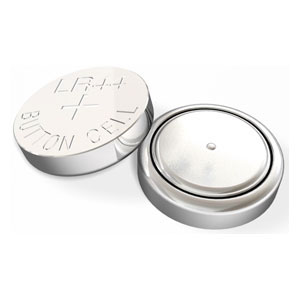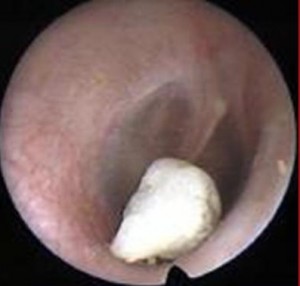Foreign body in the ear
A patient who has a live insect in the ear requires prompt attention. The intruder should be killed or fixed before attempting to remove it from the ear. To do this, the doctor can add mineral oil, povidone iodine or 2% lidocaine in the external ear canal.
 The button battery is a very dangerous foreign body, which has to be extracted urgently because of the risk of chemical corrosion that it presents. His clumsy repression can lead to serious damage to the middle ear.
The button battery is a very dangerous foreign body, which has to be extracted urgently because of the risk of chemical corrosion that it presents. His clumsy repression can lead to serious damage to the middle ear.
When it is impossible to dislodge a foreign body, it is best to refer the patient to an otorhinolaryngologist within 24 hours and to avoid any manipulation that could enclave the object more deeply. The use of micro-instruments (hooks, micro forceps, suction machine) is up to the specialist. The procedure requires an operating microscope, a specific act and a total immobility of the subject to avoid iatrogenic trauma.

After removing the foreign body, the doctor should carefully examine the duct and the tympanic membrane. In the presence of edema, abrasions or infection of the duct, antibiotic drops with or without corticosteroids should be instilled twice daily for a period depending on the seriousness of the infringement. In case of tympanic perforation and laceration, the physician should ask an audiogram to eliminate hearing loss. Finally, the clinician must look at the opposite ear and nostrils, as it is common to find multiple foreign bodies in the same child!
Reference: Le Médecin du Québec, Volume 42, Number 5, May 2007.
__________________________
Emergency in ENT
Peritonsillar abscess
Ludwig’s Angina
Foreign body in the ear
Foreign body in the respiratory tract (nose, trachea, bronchi)
Foreign body in the esophagus
Epiglottitis
Epistaxis
Perilymphatic fistula
Nose fracture
Hemorrhage post-adenotonsillectomy
Acute mastoiditis
Facial paralysis
Sudden hearing loss
